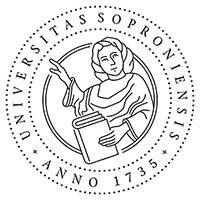Who Learns from Whom? Knowledge Transfer Between the Kaposvar University and the Micro-Region Tamasi
Abstract
The cooperation programme for higher education and the least developed micro-regions was started by the Programming Office for Least Developed Micro-regions of the National Development Agency and by the Non-profit Association for Hungarian Tourism and Regional Development (Hungarian abbreviation MITE), in 2009. The programming office initiated a pilot project supported by the Implementation Operative Programme, which covers all the 33 least developed micro-regions to be developed by complex programme and which is coordinated by MITE. The programme originates in the idea that the least developed micro-regions suffer from the lack of relations, while number of the higher education institutions possess such capacities, which from many aspects would be reasonable to direct to these micro-regions. Kaposvár University joined this programme in 2011, by signing cooperation agreement with Tamási micro-region.
References
Etzkowitz, h. – Leydesdorff, L.: The Dynamics of Innovation: From National Systems and ‘Mode 2’ to a Triple helix of University-Industry-Government Relations. Research Policy, 29(2), 109–123. 2000. doi: https://doi.org/10.1016/S0048-7333(99)00055-4
Etzkowitz, h. – Leydesdorff: The Triple helix---University-Industry-Government Relations: A Laboratory for Knowledge-Based Economic Development. EASST Review 14, 14–19. 1995.
European Comission: Expert Group on Knowledge Transfer – Final Report 30. November. 2009. 2010.
Gál Z.: Az egyetemek szerepe a regionális innovációs hálózatokban, In.: Búzás Norbert (szerk.), Tudásmenedzsment és tudásalapú gazdaságfejlesztés, Jate Press, Szeged. 2005, pp. 271–294. 2005.
Lengyel B.: Tirple helix kapcsolatok a tudásmenedzsment szemszögéből. In: Buzás N. (szerk.): Tudásmenedzsment és tudásalapú gazdaságfejlesztés. SZTE Gazdaságtudományi Kar Közleményei 2005. JATEPress, Szeged, 293–311. o. 2005.
Leydesdorff, L. – Etzkowitz, h.: Can “The Public” Be Considered as a Fourth helix in University-Industry-Government Relations? Report of the Fourth Triple Helix Conference. Science & Public Policy, 30(1), 55–61.2003. doi: https://doi.org/10.3152/147154303781780678
Leydesdorff, L. – Meyer, M.: The Triple helix Model and the Knowledge-Based Economy, Journal of Northeastern University (Social Science), 12(1),11–18. 2010.
Leydesdorff, L.: The Triple helix, Quadruple helix, …, and an N-tuple of helices: Explanatory Models for Analyzing the Knowledge-based Economy? http://www.leydesdorff.net/ntuple/ntuple.pdf . 2011.március 25. doi: https://doi.org/10.1007/s13132-011-0049-4
Nelson, R. R. – Winter, S. G. An Evolutionary Theory of Economic Change. Cambridge, MA: Belknap Press of harvard University Press. 1982.
Papanek G.: The relationship between Science, Industry and the Government in Hungary, a county in transition. Paper presented at the 3rd Triple helix Conference in Rio de Janeiro, 26. April 2000.
Downloads
Published
Issue
Section
License
Copyright (c) 2011 Sáriné Csajka Edina, Csizmadiáné Czuppon Viktória, Németh Nándor

This work is licensed under a Creative Commons Attribution-NonCommercial-NoDerivatives 4.0 International License.








